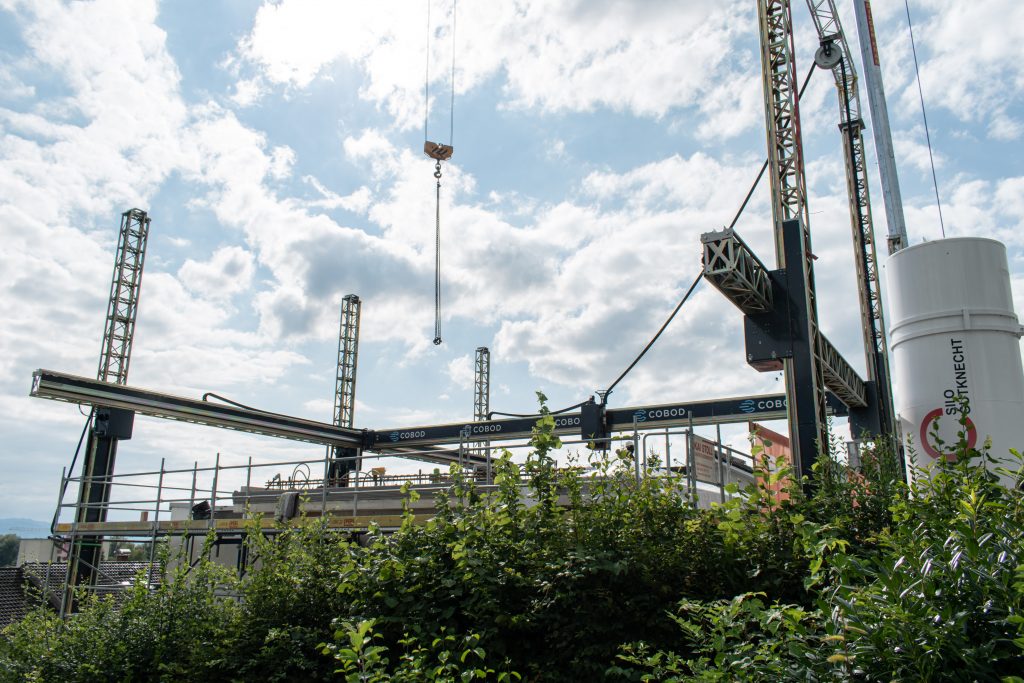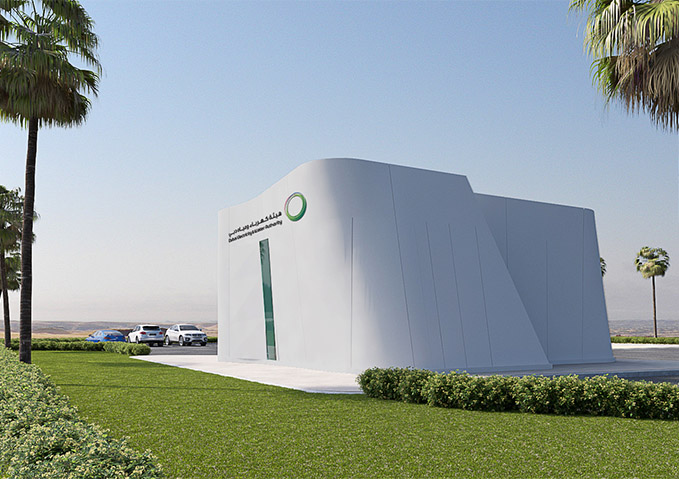Leaders from across the construction 3D printing sector have defended the technology amid research challenging its much-touted cost and efficiency advantages over traditional building methods.
Published last year by a team at Heriot-Watt University, the study found that if a two-storey structure built via precast concrete in the UAE had been 3D printed instead, the contractors’ material costs would’ve actually risen 44%. Contrary to the promoted benefits of the process, in that it’s often marketed as eco-friendly, the research also showed adopting it would only yield marginal sustainability gains.
In response, several firms at the forefront of construction 3D printing, including COBOD, Apis Cor and Black Buffalo 3D, have now reached out to 3D Printing Industry to challenge the practicality of the simulated build on which the findings are based.
“The authors used a recipe which has been developed academically and to our knowledge has never been used in practice,” claims COBOD Founder Henrik Lund-Nielsen. “What predominantly is used in practice is our Dfab solution, developed with CEMEX, which replaces the need for an excessive amount of binder/cement with the use of a few liters of additive (with very, very limited CO2 footprint). This way we can have a binder/cement content of roughly half that found in the study.”
“Until our concrete solution was developed, all other buildings in the Middle East were done with mortars, and that also dominates in the US for instance,” he added. “[But] it is clear that if the researchers had used a recipe for the concrete, which is found in practice and used everyday in Saudi and Oman (and soon a lot of other Middle Eastern states), their conclusions would have been completely different.”

A contentious study in construction
Released in the form of a conference paper late last year, the Heriot-Watt researchers’ study came to some potentially-troubling conclusions for the construction 3D printing industry. In order to assess the cost, efficiency and sustainability impact of switching from conventional construction to 3D printing, the team simulated the length of time and amount of material that’d be needed, to do so with a build in the UAE.
While the study found construction 3D printing to be 34 working hours quicker, it only proved 1% more efficient, something the researchers attributed to the “high carbon footprint” of 3D printing concrete. The team also discovered that switching to the technology would be around 5% more expensive than the way it was first built, although they did factor in wider one-off costs such as machine rental.
Ultimately, the paper didn’t go so far as to challenge the future of construction 3D printing directly, and its authors concluded that their study “supports the potential” of the technology for end-use applications. However, the researchers did call for further investigation into any opportunities for process optimization, which could help overcome some of the material efficiency issues identified in their study.

The 3D printing industry responds
Much like COBOD’s Lund-Nielsen, Apis Cor CEO Anna Cheniuntai also questions the practicality of the researchers’ proposed build. Rather than challenge the materials used in the team’s simulation, however, Cheniuntai argues that her company’s machine is “radically different” from regular gantry-style 3D printers, in a way that makes their findings “not relevant to its unique solution” to building construction.
“Major gantry printer manufacturers openly admit that their 3D printed homes are currently 20%-40% more expensive than traditional construction,” says Cheniuntai. “However, we can achieve a 34%-37% reduction in overall construction cost using our Apis Cor system.”
“It also appears that many of the study’s foundational assumptions are incorrect,” she adds. “For example, they assume printer rental cost equates to 37% of overall construction cost while materials only account for 22%. Our lease rate is projected to be $8k/month, during which time the walls of four (4) 2,000 sq.ft. homes could be easily printed.”
Black Buffalo 3D, meanwhile, is conducting its own studies into the efficacy of its technology, which could come to very different conclusions to those of the Heriot-Watt team. Working with an “independent academic team,” a spokesperson for the firm revealed that it’s now subjecting its Planitop 3D material and NEXCON printer to full lifecycle analyses, and it plans to publish the results in full once ready.
Even without having this data, the firm says that its material contains less cement than traditional mortars and can be cured to 7,000+ psi over 14 days, hence it allows users to print continuously. If molds are utilized during builds, the spokesperson adds that structures can be realized with virtually “zero waste,” and through renting its systems out, the company is letting users try these benefits before they buy.
“BB3D is not a builder or developer, but we have asked clients to be transparent about total costs of their 3D construction projects vs traditional methods,” said the spokesperson. “Our ability to rent, finance and offer NEXCON printers for sale is also helping us give clients an opportunity to trial concrete 3D printing by renting and recognizing the savings before deciding if they purchase or just continue to rent.”
Calling for concrete 3D printing clarity
In the interests of fairness, following the criticisms leveled at the Heriot-Watt paper, 3D Printing Industry also reached out to one of the study’s authors Mustafa Batikha to get a response. While Batikha reiterated that there remains the potential for “big profits” in construction 3D printing since so few companies “can implement the technology,” he said the industry needs to be more open to realize them.
In particular, the researcher highlighted how industry firms “keep some things confidential” in their printing processes, including the composition of materials used, while stopping pictures being taken of certain builds. To help with the technology’s standardization, something that’s the subject of significant research in academic circles, Batikha has therefore called for further comparative studies.
“Today the technology is used more in non-structural aesthetic elements because of the power of producing curvy and nice shapes within low time and cost,” concluded Batikha. “The [technology’s] future is in building [construction]. However, the authorities have not yet agreed on proceeding with buildings in the absence of design standards for 3DCP, and that is what academia is currently working on.”
The researchers’ findings are detailed in their paper titled “3D Concrete Printing for Sustainable & Affordable Housing Construction-Comparative Study,” which was co-authored by Mustafa Batikha and Moiz Ul Fazal.
To stay up to date with the latest 3D printing news, don’t forget to subscribe to the 3D Printing Industry newsletter or follow us on Twitter or liking our page on Facebook.
For a deeper dive into additive manufacturing, you can now subscribe to our Youtube channel, featuring discussion, debriefs, and shots of 3D printing in-action.
Are you looking for a job in the additive manufacturing industry? Visit 3D Printing Jobs for a selection of roles in the industry.
Featured image shows COBOD’s BOD2 3D printer in the process of creating the “world’s first” 3D printed home extension. Photo via PERI AG.



